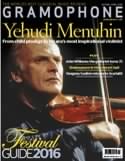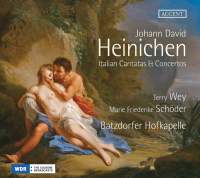Texte paru dans: / Appeared in: |
|
|
Outil de traduction (Très approximatif) |
|
|
Reviewer:
David Vickers
The enterprising Batzdorf Hofkapelle perform four of these cantatas. Marie Friederike Schöder’s gentle singing, a pair of pastoral recorders and whispering pizzicato strings depict the vulnerable plaints of an afflicted lover in Lascia di tormentarmi. Terry Wey’s delicate singing in La bella fiamma (Venice, 1711) is accompanied by elaborate theorbo obbligato parts played deftly by Stephan Rath. Both singers join forces for a dialogue between the lovers Clori and Tirsi in Se mai, Tirsi, mio bene – a cantata that is longer, more poetically varied and full of finely crafted music. The diligently planned programme is enriched by a Vivaldian oboe concerto in G minor played by soloist Xenia Löffler with assured fluidity, and a concise violin concerto in D performed by concertmaster Daniel Deuter with conversational dexterity. |
|
|
|
|
|
Cliquez l'un ou l'autre
bouton pour découvrir bien d'autres critiques de CD |
|




